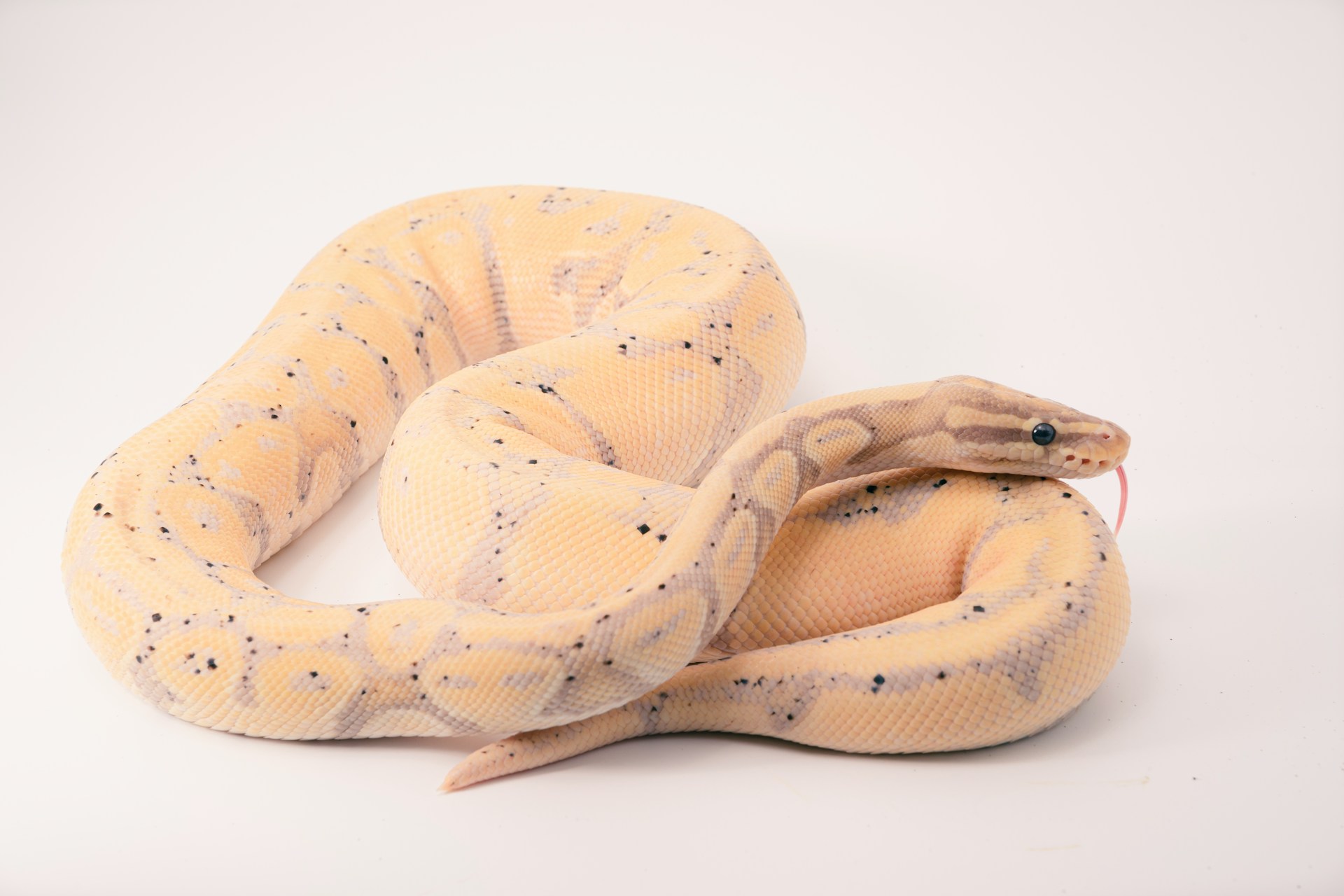The Ruby Snake, a name that evokes both intrigue and fascination, is one of the most striking and enigmatic creatures in the world of reptiles. Its vibrant coloration, elusive nature, and unique habitat make it a subject of both scientific interest and popular curiosity. Native to the dense rainforests of Central and South America, the Ruby Snake is a creature that thrives in the shadows, rarely glimpsed by human eyes. In this article, we explore the Ruby Snake’s physical characteristics, habitat, behavior, conservation status, and its significance in both the natural world and human culture.
Physical Characteristics: A Living Jewel
The Ruby Snake, known scientifically as Bothrops asper or more commonly the Eyelash Viper, stands out primarily because of its spectacular coloration. While its scientific name might not directly indicate its ruby-like appearance, the name “Ruby Snake” has become synonymous with the snake’s rich, deep-red hues, reminiscent of the gemstone from which it draws its name.
Adult Ruby Snakes typically grow to a length of 60-90 cm (2-3 feet), though some individuals have been reported to reach up to 120 cm (4 feet). The most distinguishing feature of the Ruby Snake is its smooth, glossy scales, which shimmer in the sunlight, reflecting an array of rich red, orange, and gold tones. This stunning coloration serves as camouflage in its tropical environment, blending seamlessly with the forest floor where fallen leaves and moss create a similar palette of earthy hues.
The body of the Ruby Snake is slender, and it has a triangular head, a characteristic that is common among venomous species. Its eyes are large, with vertical slits resembling those of a cat, adapted for hunting in low-light conditions. The snake’s fangs are short but extremely potent, capable of delivering venom that is both neurotoxic and hemotoxic.
One of the most notable physical features of the Ruby Snake is its prehensile tail. This tail is not only used for balance but also for grasping tree branches, which helps the snake navigate its arboreal environment. This adaptation makes the Ruby Snake a superb climber, capable of moving effortlessly between the forest floor and the canopy.
Habitat: A Creature of the Rainforest
Ruby Snakes are found predominantly in the rainforests of Central and South America, with their range extending from southern Mexico to western Panama, and down to the northern parts of Colombia and Venezuela. These areas are characterized by high humidity, dense vegetation, and a rich biodiversity, all of which provide the perfect environment for the Ruby Snake.
The Ruby Snake is a terrestrial and arboreal species, meaning it spends time both on the forest floor and in the trees. It is typically found in lowland rainforests, where it thrives in the thick undergrowth and tangled vines. The snake’s natural camouflage allows it to remain hidden from predators, while it hunts smaller animals such as frogs, lizards, and small mammals.
In addition to the dense foliage and humid climate, the Ruby Snake also depends on a specific microhabitat: areas near water sources, such as streams, rivers, and ponds. The humid environment not only provides the moisture necessary for the snake’s survival but also attracts the amphibians and small mammals that form its diet. This aquatic connection is particularly important during the dry season when the forest’s resources become scarcer.
Behavior: Elusive and Silent
Ruby Snakes are primarily nocturnal hunters, emerging at dusk to seek food under the cover of darkness. Their excellent camouflage allows them to ambush unsuspecting prey in the dense foliage or on the forest floor. The snake relies on its keen sense of smell, which is facilitated by the forked tongue, to detect the presence of prey.
Despite their intimidating appearance, Ruby Snakes are not particularly aggressive unless provoked. When threatened, they may hiss or coil defensively, but their venomous bite is typically reserved for securing prey rather than for self-defense. Their preferred hunting method is to ambush their prey, waiting motionless in a hidden location until an opportunity presents itself. Once a potential meal is within range, the snake strikes with lightning speed, injecting venom through its fangs. The neurotoxic component of the venom immobilizes the prey, while the hemotoxic component breaks down the tissues, making it easier for the snake to swallow.
The Ruby Snake’s venom is not considered fatal to humans in most cases, but it can cause significant pain, swelling, and tissue damage. While fatalities from Ruby Snake bites are rare, the potential danger posed by its venom means that caution should be exercised in its native habitat.
One of the most fascinating aspects of Ruby Snake behavior is its use of its prehensile tail. This tail is employed not just for balance when climbing, but also for grasping branches and vines, allowing the snake to maneuver through the canopy with remarkable agility. This adaptation also helps the snake avoid predators, as it can quickly ascend trees to safety when threatened.
Conservation Status: A Species in Decline?
The Ruby Snake, like many tropical species, is under threat due to habitat loss, deforestation, and the encroachment of human development. As rainforests are cleared for agriculture and logging, the snake’s natural habitat is being destroyed, putting pressure on its population.
While the Ruby Snake is not currently listed as endangered, there are growing concerns among conservationists about the long-term survival of the species. The destruction of rainforests not only reduces the available habitat for the snake but also diminishes its food sources. Additionally, the snake’s slow reproductive rate—females give birth to a small number of live young (usually 4-10) after a gestation period of several months—makes it particularly vulnerable to population declines.
Conservation efforts are critical to preserving the Ruby Snake and other species in the region. Organizations working to protect tropical rainforests, such as the World Wildlife Fund (WWF) and Conservation International, aim to raise awareness of the importance of these ecosystems and advocate for sustainable land-use practices. Protecting the habitats of iconic species like the Ruby Snake is not only essential for their survival but also for the overall health of the global environment.
Cultural Significance: The Ruby Snake in Myth and Legend
In many cultures throughout Central and South America, snakes have long been symbols of power, danger, and mysticism. The Ruby Snake, with its striking appearance and venomous nature, is no exception. Indigenous peoples in the region often regard snakes as spiritual entities, representing forces of both creation and destruction.
In particular, the vibrant coloration of the Ruby Snake has given rise to various myths. Some cultures view the snake as a protector of the rainforest, embodying the vitality and danger of the natural world. Others see it as a messenger between the spirit world and the physical world, its crimson scales symbolizing the connection between life and death.
The Ruby Snake has also made its way into popular culture, often portrayed as a symbol of mystery and danger. Its allure is undeniable, and its striking appearance has captured the imaginations of artists, writers, and filmmakers alike.
Conclusion: The Ruby Snake’s Place in the World
The Ruby Snake, with its stunning appearance and elusive nature, is a symbol of the beauty and fragility of the rainforest ecosystem. As a species that relies on the dense, humid environments of Central and South America, it serves as an indicator of the health of the rainforests it inhabits. Its status as both a predator and prey in the intricate web of life emphasizes the delicate balance that exists in these ecosystems.
Though the Ruby Snake is not currently at risk of extinction, its continued survival is inextricably linked to the preservation of its habitat. Conservation efforts are essential to ensure that this mesmerizing reptile, along with countless other species that share its environment, can continue to thrive for generations to come. The Ruby Snake is a living testament to the wonders of the natural world—a creature of beauty, mystery, and ecological significance.











